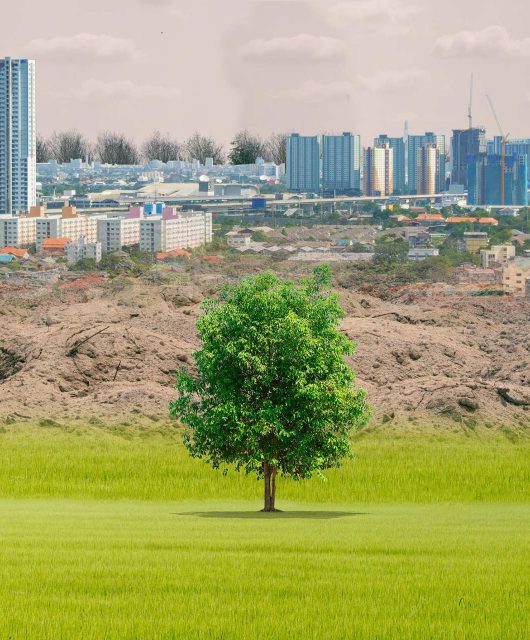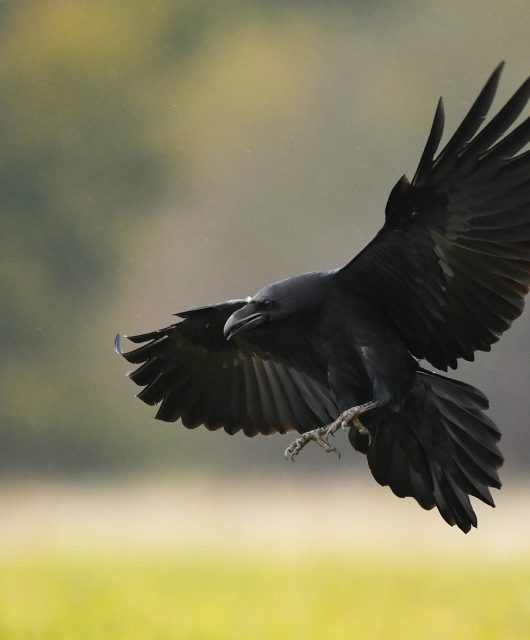Four Young Idealists Helping Inspire a Brighter Future for Wildlife
While Canada recognizes and celebrates past individual achievements during Black History Month, the Canadian Wildlife Federation is celebrating the current work and future impact of some of Canada’s brightest young conservationists. Here are just a few shining examples of the passionate conservation work being done across the country and around the world.
1. Alfred Otieno Achieng
 Alfred Otieno Achieng is currently a PhD candidate at the Department of Physical and Environmental Science, University of Toronto. He has a BSc and MSc degree in Fisheries and Aquatic Science and has been full-time lecturer at the University of Eldoret, Kenya, from September 2013 to date. He has also taken the role of International Board Member of the International Association for Great Lakes Research (IAGLR) since April 2021.
Alfred Otieno Achieng is currently a PhD candidate at the Department of Physical and Environmental Science, University of Toronto. He has a BSc and MSc degree in Fisheries and Aquatic Science and has been full-time lecturer at the University of Eldoret, Kenya, from September 2013 to date. He has also taken the role of International Board Member of the International Association for Great Lakes Research (IAGLR) since April 2021.
Alfred’s research within the African Great Lakes includes mapping, monitoring and assessment of rivers, lakes, and wetlands while studying their biology, ecology, and human impacts on these ecosystems. He has developed indicators for river health within the Lake Victoria basin, and conservation strategies for major watersheds in Kenya, reviewed challenges with watershed management decision and the need for education and training in freshwater science within the African Great Lakes. He has also reviewed and published on biodiversity challenges in aquatic and terrestrial ecosystems in Africa to inform future research needs and a way forward in monitoring and policy implementation.
Alfred has an interest in ecosystem modelling and is passionate to develop computer simulations to understand ecosystem processes, structure, and function. His PhD research at the University of Toronto focuses on computer modelling to determine food web changes in Lake Ontario with an eventual goal to develop ecosystem models on a larger scale to better understand ecosystem functioning and inform their conservation, policy implementation and management actions.
2. Acacia Frempong-Manso
 Acacia Frempong-Manso is a PhD candidate in Biology at Carleton University. Her research focuses on achieving conservation gains in shoreline erosion controls. The overarching objective of her doctoral work is to contribute valuable insights and solutions to address the critical challenges associated with maintaining the ecological health of shorelines.
Acacia Frempong-Manso is a PhD candidate in Biology at Carleton University. Her research focuses on achieving conservation gains in shoreline erosion controls. The overarching objective of her doctoral work is to contribute valuable insights and solutions to address the critical challenges associated with maintaining the ecological health of shorelines.
Acacia’s research investigates innovative approaches to shoreline erosion controls, emphasizing the need for sustainable and effective conservation measures. She aims to not only advance scientific understanding but also propose practical strategies for mitigating the impacts of shoreline erosion on wildlife and fish habitats.
The significance of her work extends beyond academic exploration; it aligns with her commitment to advocate for healthy wildlife and habitats. By informing and educating Canadians, advocating responsible human actions, and representing wildlife on conservation issues, Acacia strives to bridge the gap between research findings and public awareness.
As the focal point of her Ph.D. journey, Acacia’s work involves studying ways in which shoreline erosion controls can be enhanced to yield conservation gains for fish habitat. Although it is ideal to maintain natural shorelines, it is often necessary to use retaining walls of various sorts to protect against catastrophic erosion. Acacia’s work focuses on field research to assess the impacts to biodiversity associated with different shoreline management methods. Through her dedication to this work, she aspires to contribute meaningful advancements to the field, ultimately influencing conservation practices and policies for the betterment of Freshwater ecosystems.
3. Peter Soroye
 Peter Soroye serves as the Key Biodiversity Areas (KBA) Assessment and Outreach Coordinator, supporting both research and communications for the Canada KBA program. Peter completed his PhD in Biology at the University of Ottawa, where his work focused on predicting the impacts of climate and land-use change on North American and European pollinators. Peter’s other main area of research interest is in community science, especially how information gathered through it can influence conservation and research. While most of his research has been computational, Peter has spent several field seasons catching invertebrates and reptiles in Canada and the United States. Peter is a passionate science communicator, appearing in dozens of news and media pieces.
Peter Soroye serves as the Key Biodiversity Areas (KBA) Assessment and Outreach Coordinator, supporting both research and communications for the Canada KBA program. Peter completed his PhD in Biology at the University of Ottawa, where his work focused on predicting the impacts of climate and land-use change on North American and European pollinators. Peter’s other main area of research interest is in community science, especially how information gathered through it can influence conservation and research. While most of his research has been computational, Peter has spent several field seasons catching invertebrates and reptiles in Canada and the United States. Peter is a passionate science communicator, appearing in dozens of news and media pieces.
As KBA Assessment and Outreach Coordinator at WCS Canada, Peter’s biggest impact is in leading the outreach, engagement, and collaboration between the KBA program and Indigenous communities, stakeholders and rights holders. The KBA Canada program works to identify and map sites of high biodiversity value across the country.Peter helps ensure that there is space and opportunity for all interested parties to add their perspectives and help highlight these sites along with the ongoing conservation work within them. Information from the KBA Canada program is increasingly being used to help inform ongoing conservation decision-making, from helping inform land-use planning and protected area planning, to supporting proposals for Indigenous Protected and Conserved Areas. Learn more about the KBA Canada program at KBACanada.org. Find out more about Peter at petersoroye.com.
4. Sandra Klemet-N’Guessan
 Sandra Klemet-N’Guessan is in the last stretch of her PhD at Trent University where she studies the role of aquatic animals in cycling elements (nutrients, carbon, and contaminants) in streams and lakes via their excretion. Passionate about science and travelling, Sandra has had the opportunity to participate in and lead research projects in six countries and in three languages. From terrestrial insects to aquatic animals, Sandra is fascinated by the interactions among species and between species and their environment at the land-water interface; a cross-boundary approach she also takes in her science and equity outreach activities.
Sandra Klemet-N’Guessan is in the last stretch of her PhD at Trent University where she studies the role of aquatic animals in cycling elements (nutrients, carbon, and contaminants) in streams and lakes via their excretion. Passionate about science and travelling, Sandra has had the opportunity to participate in and lead research projects in six countries and in three languages. From terrestrial insects to aquatic animals, Sandra is fascinated by the interactions among species and between species and their environment at the land-water interface; a cross-boundary approach she also takes in her science and equity outreach activities.
Sandra’s primary research has important implications in the way we assess animals’ functional role in aquatic ecosystems, especially through their impacts on biogeochemistry and food webs. Both number/size and types of species can influence element cycling rates and can affect species’ overall contribution to elemental cycling, which can have bottom-up effects on the structure and functioning of food webs. Sandra has communicated her work to both specialists and non-specialists through several science communication initiatives, including with the Ontario government with regards to research on rare plant species and its policy implications. In the future, Sandra would like to continue communicating science with diverse audiences and build international networks of stakeholders in environmental science.



